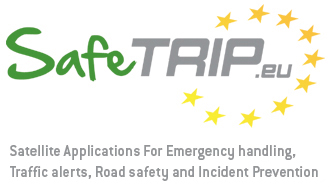

Introduction
User Needs
Environment
Passenger Transport Operators
Environment
Access to Vehicle Information
Access to Environmental Information
Description of Methodology
Others
Safety
Entertainment
Others
Individuals EU-Citizens
Safety
Navigation
Entertainment
Emergency Services
Call Filtering
Information about Heavy/Hazardous Goods
Information about Coach/Bus involved in Incident
SecurityRoad operators have stated some needs that would require the harvesting of data from individual road users to assist with both the operation of the entire motorway system and the targeting of information to individual drivers. This data needs to be processed in accordance with the Data Protection Directive 95/46/EC to protect personal data, or “any information relating to an identified or identifiable natural person.” An identifiable person is “one who can be identified, directly or indirectly, in particular by reference to an identification number or to one or more factors specific to his physical, physiological, mental, economic, cultural or social identity.” This must maintain the privacy of the road users and data should not be retained without good reason after its initial use. Driver Behavior TrackingRoad operators would like to detect the fatigue level of drivers, especially those of hazardous and large vehicles as they have legal times on driving time. Driver fatigue accounts for 20% of commercial vehicle accidents in the EU. Road operators would also like to detect signs of inattention or speeding that could trigger a local warning to the driver and subsequently send an alert to the operation centre. Road operators should take heed of the Data Protection Directive. This could mean that: - Operators do not unduly keep data on vehicles after they have exited their network. - Data on the behavior of the individual driver is properly encrypted and kept anonymous to the road operator Retrieve Vehicle InformationIn the event of a road incident, road operators would like to have access to information about the type of cargo transported by the vehicle to facilitate any required cleanup and appropriate deployment of emergency services. Currently, information about the vehicle cargo is available in printed format if a route needs to be pre-approved to use the road network. The cargo information is not available in a database at the moment. Road operators should take heed of the Data Protection Directive. This could mean that: - Operators encrypt this data as it is commercially sensitive and road operators should not unduly keep data on cargo after they have exited their network. Provide traffic info about travel times to road users using their positionCurrently, traffic information is rather general and typically includes information about incidents on the road and traffic jams. If vehicles could provide information about their location or speed along various segments, it will allow road operators to model and predict traffic flows, and therefore compute travel times. Road operators should take heed of the Data Protection Directive. This could mean that: - This data is properly encrypted as privacy of all drivers must be protected. - This data is not unduly detailed and not contain any identifying information if collected for this purpose. Send adaptive speed to individual usersCurrently adaptive speeds are displayed on Variable Message Signs (VMS). However, during incidents on the road network, more important messages take priority and it is therefore not possible to display the speed anymore. Advisory and mandatory speed limits for the type of road and vehicle can be sent by the road operators. Road operators should take heed of the Data Protection Directive. This could mean that: - This data is not unduly detailed and not contain any identifying information if collected for this purpose. Access to Vehicle InformationRoad operators wish to have access to the profile for large vehicles – typically information about the height, width, load, type (motor-homes, trailer), etc - in order to identify a route that can accommodate the height and width of those vehicles. Road operators should take heed of the Data Protection Directive. This could mean that: - There is proper notice to these vehicles that they are being “opted-in” to this type of detailed data collection for this purpose and the data will not be shared with third parties. Capture and Relay Vehicle InformationRoad operators wish to have vehicle sensor data to be sent back to the operation centre during an incident. The most important data after an impact would be the geographic position of the vehicle. Other information includes impact points, airbag activation, overturns, fuel level, photos of the impact inside of the vehicle, outside temperature and climatic conditions. More specific information to assist could include cargo details, passenger counts, and any specific passenger needs. This would assist in providing the right rescue services through the first emergency vehicles to arrive at the scene. Road operators should take heed of the Data Protection Directive. This could mean that: - Road operators ensure that this information is only shared with emergency services and is not shared with other agencies or safety studies without permission of the drivers involved as it is possible to identify individuals involved in accidents with this detailed data. - This data is encrypted in a way that it cannot be stolen by passers-by with receiving equipment. |

Figure 5: Traffic information is currently shown on boards on the roadside

